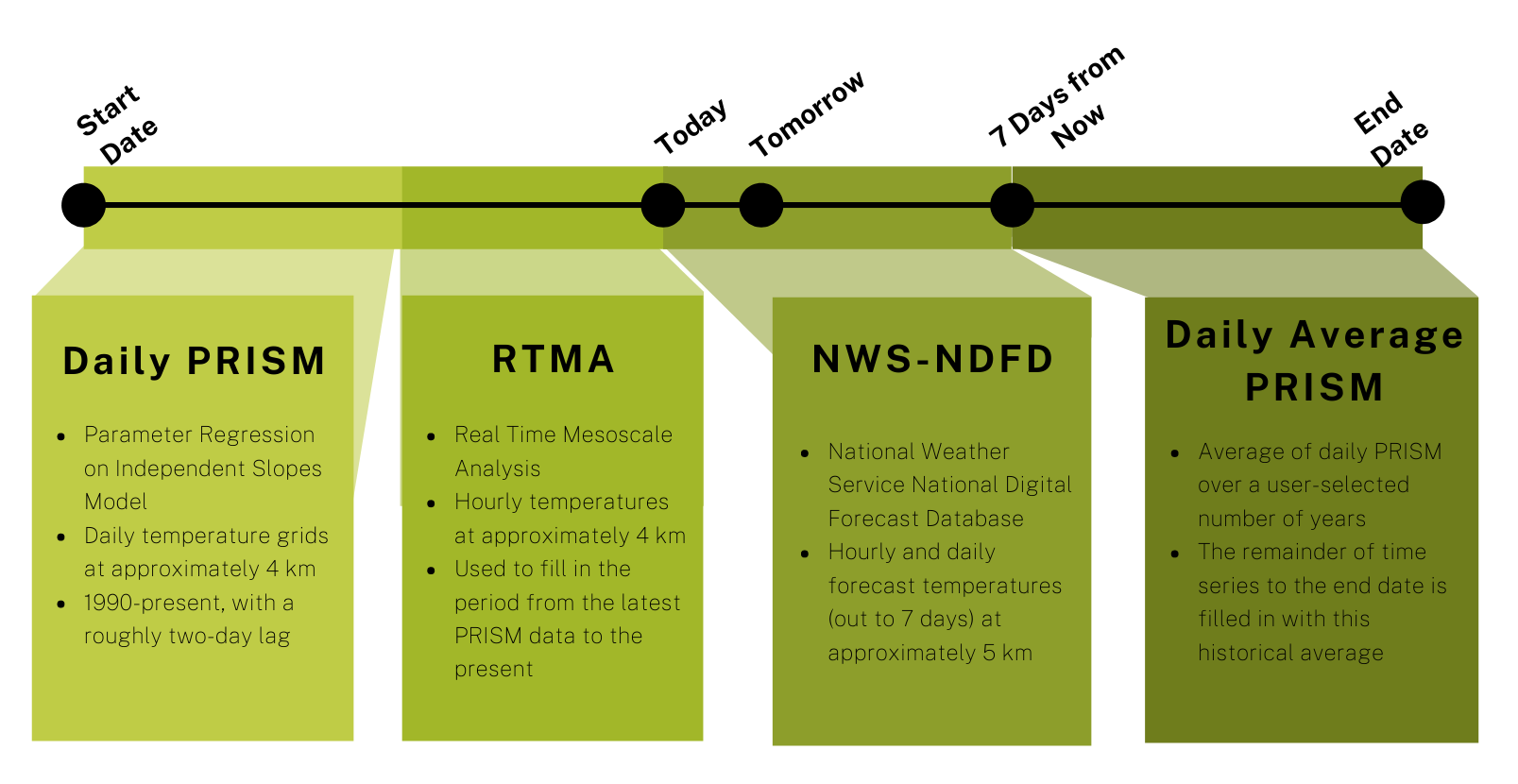Growing Degree Day Explorer
Sept 2025: RTMA and NDFD data are now available again in the chart below
This tool enables users to explore daily growing degree day (GDD) accumulations for locations in North Carolina based on high-resolution gridded data (learn more), which enables to the tool to provide localized information for all places in North Carolina. To obtain GDD accumulations for individual stations, visit our Cardinal and Station Scout tools. This tool requires users to submit a location, start and end dates, and a base temperature. Optional inputs include the ability to plot a comparison GDD time series (such as with different start and end dates or a different base temperature) and to plot comparison lines for historic years.
Share or Bookmark This Page
About This Tool
What are Growing Degree Days?
Growing Degree Days (GDDs) are a measure of accumulated heat. GDDs are useful for a number of agricultural applications, such as predicting when certain crops may reach maturity or when certain insect pests may emerge in the spring and cause damage. This tool calculates daily GDDs as the daily average temperature minus a base temperature, where the base temperature is user-defined and describes a temperature below which development is limited or does not occur. Additional formuluations for GDDs exist, such as ones that use hourly data or that also include an upper temperature limit, and future upgrades to this tool may include additional GDD formulas or thresholds.
Data Sources
This page makes use of several gridded datasets:- Past data from PRISM: Daily Temperature and Precipitation Gridded Product [Learn more about PRISM]
- Recent data from RTMA: National Weather Service's Real-Time Mesoscale Analysis (aggregated to daily) [Learn more about RTMA]
- Forecast data from NWS NDFD: National Weather Service National Digital Forecast Database [Learn more about NDFD]
- Historical data calculated from PRISM: PRISM Daily Data averaged on-the-fly over the past 5, 10, 15 or 30 years based on user selection[Learn more about PRISM]
